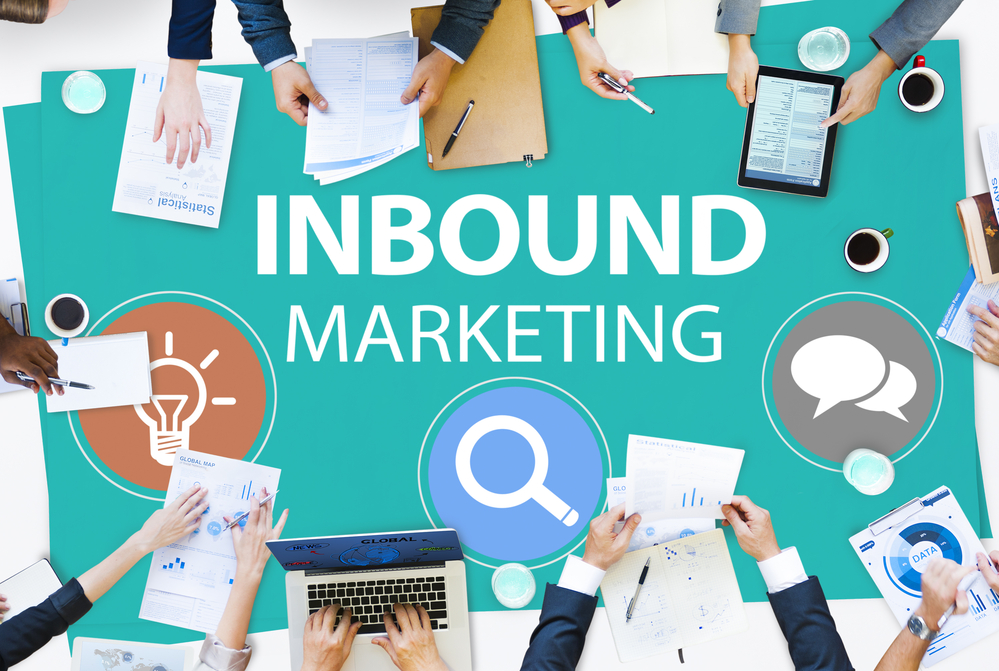5 Tips To Jump-Start Your Online Marketing
Running a small business is not for the faint of heart. Business owners out of necessity are forced to wear many hats. Whether its developing a new...
7 min read
Olivia Walls
:
Feb 28, 2021 10:41:18 PM

Sometimes it takes a tragedy to make you rethink everything. For many businesses, COVID-19 was a wake-up call after years of avoiding implementing a digital marketing strategy.
With stay-at-home orders in place, the world outside suddenly ceased to exist.
Americans were already doing 78% of their shopping research online. Now, suddenly everyone but those people working at essential businesses were spending all their time at home sheltering-in-place. This left many businesses fighting to survive.
 Before this happened, traditional marketing channels were still used by many. Some proponents included retail, restaurants, and sales rep-driven industries.
Before this happened, traditional marketing channels were still used by many. Some proponents included retail, restaurants, and sales rep-driven industries.
Although traditional methods were already becoming less effective in recent years, suddenly they became obsolete.
During the lockdown, many brick and mortar businesses could have been operational through the use of delivery/pickup options. Unfortunately, they were left behind the eight ball unable to employ those channels.
While many had websites, they were often outdated and incapable of generating leads or processing orders.
Unfortunately, setting up a digital selling mechanism takes time and money. Online forms need to be created, follow-up emails written, a system to fulfill orders developed...and that's just for starters. This isn't something businesses can do overnight.
Now, a lot of these businesses are questioning whether they can survive.
Even after many of the lockdowns have been lifted with some still having restrictions, what's next? For many, the tried-and-true ways of connecting with customers may not be cutting it anymore.
For some time, many businesses have been in a "comfort zone". They knew that they could probably do more business if they employed digital marketing, but they were satisfied with where they were.
Those days are over.
If there's one thing we know from history, it's that events like this change us as a culture. We were already shifting into a digital existence. Now, even more so.
And consider the Baby Boomers who may have responded more than others to traditional marketing in the recent past. They are now enjoying the benefits of digital connectivity as they stay safer at home. And, now that they have experienced the convenience for themselves, they likely won't go back.
Businesses who haven't embraced digital marketing can't afford not to do it now for two significant reasons:
1. Even though many businesses have reopened, it doesn't appear we are going to go back to business as usual.
2. Businesses can't afford to get caught in the same situation again.
And, there will be a next time. In fact, many states have seen a resurgence of the virus and instituted a renewal of restrictions. In addition, the World Health Organization is warning that human activities like deforestation may increase the risk of future pandemics.
So, businesses must look at ways to implement a digital strategy now.
No one's saying it will be easy, given the torment these businesses have recently gone through. But, implementing digital marketing now will help them bounce back faster and be better prepared for what's ahead.
If your business is one of those businesses that hasn't implemented a digital strategy, you might be asking how you should do that. Here are 5 steps to get you started!
This may seem like an insult. Of course, I know my customers, you might say. But do you know them as you only can through data. Unlike real life, everything people do on your website and social media pages can be tracked.
While this may seem like an invasion of privacy, know this...Back in 2016, 57% of customers said that they are willing to trade some of their privacy if you use that data to create a better customer experience.
 Fast forward to today...They're not only willing; they expect it. And the businesses that use data to deliver that experience, win and grow their businesses.
Fast forward to today...They're not only willing; they expect it. And the businesses that use data to deliver that experience, win and grow their businesses.
In your digital strategy, you should collect data through the many channels where you come in contact with your customers, like:
Once you collect this data, then you need to analyze it to build buyer personas.
Buyer personas are composites of your ideal customers. You know, the ones who come to you, buy more, spend often, and spread word-of-mouth. This is your customer base. They're also the customers who are most likely to try new offerings, become fans of your brand, and feel a sense of connection with your brand that encourages them to share it with others.
Focus here and flourish.
For every one second of load time, you lose 11% of your website visitors—first impressions matter. If sites are slow, hard to use or don't provide the information people are looking for, they will go elsewhere. They're not willing to figure it out. They believe you should create a seamless experience from landing page to checkout to delivery.
Your website is like your flagship store in the digital world. It must thrive for everything else you do in digital marketing to succeed.
Most approaches to website design focus on the services and products the business sells. Perhaps, they’ll mention how the business started and grew over the years and how successful they have become. In other words, it’s usually about themselves and how great they are. Honestly, people don't care about these things.
What they care about is how you can help them!
So within about 5 seconds, a visitor to your website should understand what you do and how you can help them. In order to help you develop a website that works for your business, we have created a free downloadable eBook, The Top 5 Things Your Website Needs to Make Money.
Here are a few other things to consider when it comes to your website.
According to Statista data, over half of website traffic is now on mobile devices. And in many cities, this may be even higher.
And what's more, if you are are a brick and mortar business, you'll want to know this...
According to a Nielsen consumer behavior study, 77% of people buying things with the help of their smartphones, don't end up making the purchase there. They go to the physical store. This study was, of course, before COVID-19. But it shows the importance of the smartphone in the customer journey.
Ten years ago, a business could get away with not having a mobile-responsive website. But if you haven't modernized your site to adapt to screen sizes and load quickly on mobile, then you could be automatically writing off half of your traffic--or more.
A final piece of the website puzzle is building a site designed to generate leads and support the sales process. Customers will leave a sale mid-order if the process is cumbersome or surprises them with unexpected shipping.
A streamlined online sales process includes things like:
Over 70% of customers prefer self-service options over having to speak with someone. Creating this kind of content on your website serves several purposes, among them:
There may be millions of people online just in your local area. How can you reach these customers?
Know that your goal is not to cast your nets wide and scoop up as many people as possible. Because if you did, you'd have to throw a big net. And, the holes in the net would be too large, letting even likely customers slip through your grasp.
So, how do you do this?
Your goal, instead, is to create an online presence that draws your most ideal customers into your website. Companies like yours are doing this by creating branded content that their buyer persona (ideal customers) want to consume.
Depending on your strategies and where you're reaching people in their buying journey, this content may be:
 Helpful
HelpfulYou may create things like:
Creating and distributing branded content increases brand recognition and brand affinity. With time, it also increases your online visibility. So people who have never heard of you, but are your ideal customer, find you naturally in search results.
Over 50% of websites are found online through organic search results---mostly Google in the US. So, gaining visibility in Google search results is vital when magnetizing a brand.
Through search engine optimization (SEO) strategies and tools, you learn what types of content your target customers are looking for online related to your products and services. You can then create this kind of content to draw the ideal customers in. You also explore what your competition is doing, so that you can do it better.
This is what inbound marketing is all about! It magnetizes your brand, so the right customer comes to you.
You can waste a lot of time and money on social media, if you focus on pushing products and messages. Try creating a social environment instead. This is a place where customers share, communicate, and enjoy spending time. When you build a relationship that customers value and want to share with others, everyone wins.
Magnetizing content is a massive part of it. But it's also how you interact with people. Try hosting social contests, commenting, and sharing customer-generated content about your brand.
Social listening is a vital part of getting social as a business. You need to understand how your customers use social media before you can build social media strategies that reach them. To start social listening today, simply follow some hashtags related to your industry or brand to see what they're sharing.
The above inbound marketing steps are essential. But, you must have a clear method to convert new visitors and fans into actual customers.
Magnetizing your brand without creating clear conversion road maps is chaos. On top of that, without these pathways, it's also hard to measure whether your social media and content are actually leading to increased revenues.
You hear about lead generation a lot in Business to Business (B2B) marketing. But in inbound marketing, it's just as important for Business to Consumer (B2C), especially if your product or service isn't an impulse buy.
Your goal is to draw them in with your content and then turn them into a lead by offering them something in exchange for an email address.
Depending on your brand and digital strategy, this might be a(an):
Once you have an email address, you have more control over the customer relationship. As long as you don't betray their trust by bombarding them with ads, you can nurture this relationship and grow the lead into a repeat and regular customer.
These are trying times. But the lockdown's end won't return us to business as usual. It's essential that you welcome the digital age and reach customers where they are online.
Digital marketing is the way to do that. And, by taking the above steps now, you can grow your business both online and in the real world to meet your revenue goals.
If the above information seems overwhelming, you may be wondering if you should attempt to implement a digital marketing strategy yourself or hire a marketing agency. You can learn more in our article, Why Should I Hire A Marketing Agency For My Small Business?

Running a small business is not for the faint of heart. Business owners out of necessity are forced to wear many hats. Whether its developing a new...

Facebook can be a very effective tool in marketing your business and driving customers to your website. However, in order for this to happen, you...

Today, many companies are re-evaluating their marketing efforts and looking for new marketing techniques to replace the ones that are no longer...